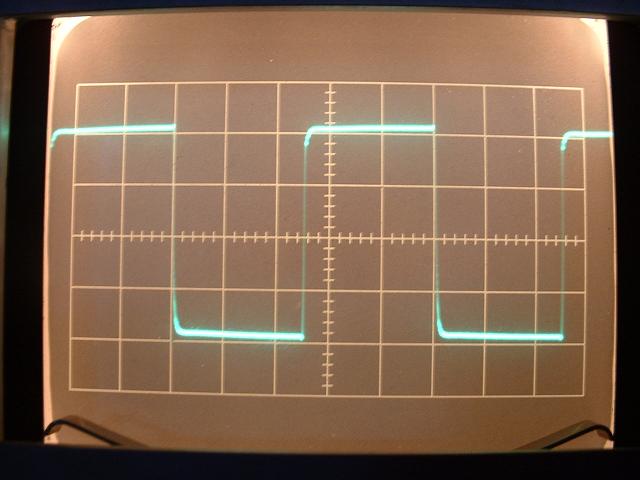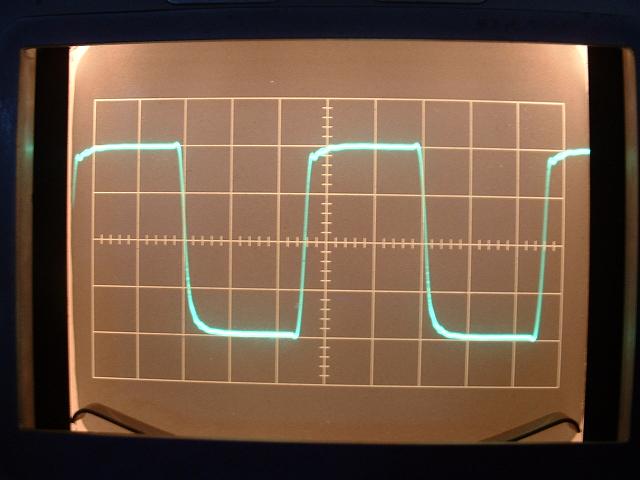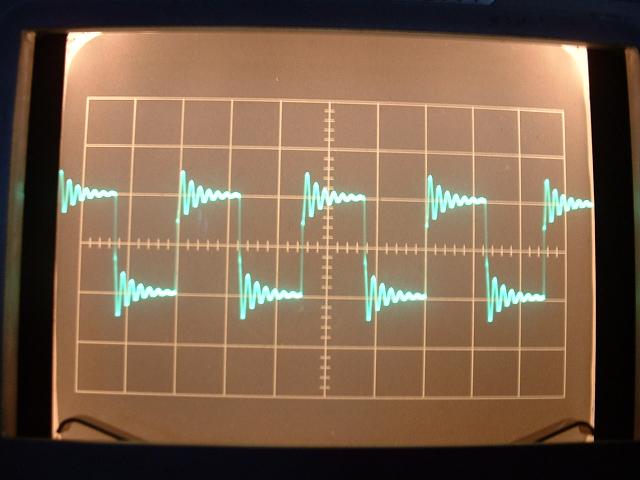Pulse response
The pulse response was determined by feeding a square wave from the PM5192 synthesizer and recording the response on the oscilloscope screen, with or without a capacitive load connected in parallel with the load (4 ohm pure resistive). All measurements were done at the 4 ohm load terminals, with the Zobel network in place.
Some designers have a strong dislike of amplifiers with high negative feedback (or even of the whole global negative feedback concept). They claim that an amplifier with high negative feedback will have a poor TIM and DIM performance. They are right, if they would also add: "a slow one". A very interesting feature in our amp is its “non-slewing” characteristic, meaning that fast transients are not limited by a lack of drive current (from any stage). The oscilloscope pictures in this page show the rise and fall times which are controlled by the time constants of the NDFL networks and the response of the Zobel network. This has nothing to do with any intrinsic slew rate limitation. Measurements before the Zobel network revealed constant rise and fall times (10%-90%) of about 250nS, essentially independent to the output power, equivalent at full output (+/-38V) to a slew rate of about 304V/uS. This proves that our amp has virtually no slew rate limitation, but rather a low pass filtering effect at the load terminals. Such a low pass effect does not compromise the TIM and DIM performance! Although it is possible to let this amp slew at extreme high levels we deliberately limited the intrinsic slew rate at 500V/us, to protect the transistors of the NDFL stage and VAS against excessive currents which may induce catastrophic device failures.
20KHz pulse response, pure resistive 4 ohm load. Vert scale: 20V/div, Hor scale: 10uS/div

100KHz pulse response, pure resistive 4 ohm load. Vert scale: 10V/div, Hor scale: 2uS/div
20KHz pulse response, 1uF in parallel with 4 ohm load. Vert scale: 5V/div, Hor scale: 20uS/div
The Ultimate Audio Amp
From Genesis to Revelation





